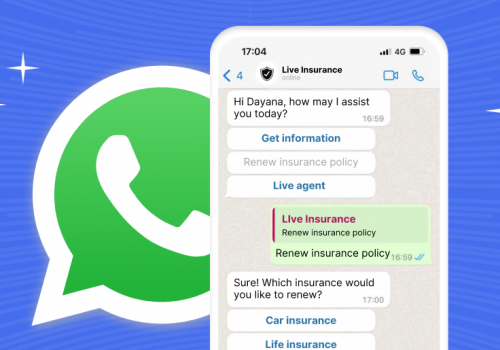Customer-Centric Approach, The current coronavirus pandemic has plunged many people into hard times, both financially, and in terms of their health. Similarly, this time has been difficult for businesses that have had to adapt quickly to a new way of working and a more remote customer base. Staying connected with customers now involves a careful and methodical approach.
It’s also true that customer-centricity has been a major focus of businesses in recent years. But how do you focus on fostering a positive customer experience during these hard times?
What is Customer Centricity?
Put simply, customer-centricity is an approach to business that always keeps the customer experience in mind. When many people think of customer-centricity, their mind goes automatically to customer service. Customer service is an important element of building a customer-centric business, but it’s not the whole picture.
The processes and procedures in a business are also key to customer-centricity. So are the daily actions and decisions of employees.
Why is Customer Centricity Important?
We live in a fast-paced consumer-led economy. Competition is fierce, and consumers are talking to each other like they never have in the past. Social media and review sites have allowed consumers to share every detail of their experience with a company in a matter of minutes.
At its most basic level, it comes down to acquiring and retaining customers. Businesses need to do these two things if they are to survive.
A Guide to Customer Centricity During Hard Times
How to Become a Customer-Centric Business
Before we delve into how to be a customer-centric business during hard times, let’s consider how you become a customer-centric business in general. Customer centricity isn’t something that happens by accident. When people make the mistake of assuming customer-centricity is all about customer service, they only focus on one part of the equation. Pumping time and resource into customer service will help improve the customer experience, but it can’t be the only approach. At its core, this is what every customer-centric business needs to focus on:
- Intent – Your actions and decisions must be intentional. For every new policy or procedure, you implement, consider why. Write a list of the benefits, both to the business and your customers.
- Employee policies and procedures – Employees should know exactly how they need to conduct themselves in front of customers. This goes beyond greeting customers with a smile or wearing a uniform. Employees should be 100% clear on the powers they can utilize to meet customer expectations. Can they offer refunds or discounts? How should employees present themselves? Are they allowed to speak on behalf of your company?
- Forward-thinking – Customer centricity isn’t something that you draw up a plan for once and then use this plan for the decades to come. Customer expectations are shifting constantly. New technology comes to the market all the time, and this technology has the potential to set a new bar for customers. To continuously be a customer-centric business, you need to adapt as customers adapt. Don’t be afraid of experimenting with new ways of improving the customer experience.
What happens when you improve the customer experience?
- Customer retention is improved.
- Customer satisfaction goes up – This leads to positive reviews online and a positive reputation on social media. It also encourages customers to spend more money or spend more often.
- It improves the success of cross-selling and up-selling.
- It attracts more new consumers and converts them into customers.

Know That All Decisions Can Affect Your Reputation
One research study found that 64% of customers actively choose to buy from socially responsible brands. With this in mind, it’s a good idea to think carefully about how you treat your employees and customer base during this time. When you’re a public-facing business, and particularly a well-known one, people are always watching. While this is true during easier times, it’s especially true during a crisis.
A lot of people are experiencing great hardships or know those who are. There’s a desire for solidarity among the public. People who make the lives of others easier during hard times are looked upon favorably, and conversely, those who do the opposite are viewed extremely negatively. During a crisis, people are watching even more closely than before. Most people are using social media to stay in touch with friends and family in a world where social distancing has become the norm.
The decisions businesses make during the pandemic are likely to stay with them far beyond the crisis. We’ve already seen people on Twitter and Facebook pushing for boycotts of companies whose behavior is deemed unacceptable. For example, calls for people to boycott or shame Virgin went viral when company owner Richard Branson announced he would cut jobs to staff or wouldn’t offer full pay to his employees. Those calling for the boycott also pointed out that Branson has historically been accused of avoiding paying tax and has previously sued the UK National Health Service. We’re not here to debate Branson’s actions or any other public figure, that’s for journalists and public officials to weigh in on. However, regardless of where we or you personally stand on the issue, there’s no question that this pandemic has tarnished his reputation and likely the reputation of Virgin as a whole.
What can we learn from how consumers have treated Branson? That your historic actions will be surfaced if you don’t act in a way the public deems acceptable. The accusations that Branson hasn’t paid his fair share in tax have been around for a long time, and he’s not the only billionaire accused of this. However, these accusations were resurfaced because he asked for a government bailout during a crisis. Airlines often operate with razor-thin profit margins, and this has been getting worse in recent years. Every year an airline will go bust. But the harsh reality is, consumers don’t care. They care about whether a company is making lives harder or better for others during a crisis.
If you have to make decisions that might be seen as unfavorable, like cutting your staff numbers, then it’s important to control the message.
Empathize with Your Customers
No one has been untouched by this pandemic, although some people have been affected more severely than others. It’s important to acknowledge what your customers are going through and offer to help where you can. Here are some of the ways businesses have chosen to show their support for their customers during these hard times:
Offering Free Products or Substantial Discounts to Frontline Workers
Healthcare workers are putting themselves at risk every day to care for the sick. Many companies choose to reward these key workers with free products or heavy discounts. Many companies in the US are offering a free meal or a free car wash to healthcare employees. This not only boosts morale for these workers but also boosts your reputation in the wider public.
Offering Discounts in General
Finances are complicated right now. Some people have lost their job, been put on reduced hours, or otherwise have lower incomes. Other people have more expendable income because they are saving money by not doing the things, they would normally do like go to bars or restaurants. For those people on a reduced income, they will be more cautious about where they spend their money and how much they spend. People will have entirely new budgets during a pandemic and to keep these consumers buying from your business, you have to fit into this budget.
Now, of course, you won’t be able to fall into the budget of every person or convince every customer to spend. But you can take some pressure off by offering sales and discounts on your popular products or services.
Discounts are likely to be particularly effective for subscription services. When people are making a new budget, cutting down on monthly payments is usually one of the first things we do. This is because it’s easier to remove a $10 a month subscription than it is to remind yourself not to buy as much coffee. If you offer a subscription service that can’t be utilized during the pandemic, it might be wise to freeze payments until customers can use the service again.
For example, the popular cinema chain Odeon in the UK has done this. They offer a monthly subscription where customers can pay £17.99 a month and go see as many movies as they wish instead of buying individual tickets. When the UK government told nonessential businesses to close, Odeon froze the payments for these customers. This is beneficial for the business because customers don’t have to pay for something, they can’t use but will likely use the service again once the cinemas are allowed to open. If Odeon had not frozen these payments, many customers would have canceled their subscription anyway and there’s a significant risk that they would never start it up again. In a way, Odeon has future-proofed its business while also supporting its customers.

Connect with Customers
Staying connected with your customers is essential during this time. If you have a brick and mortar business, then you might have less of a social media presence than other businesses. This is because during normal circumstances, you make personal connections with your customers. These customers value the face to face experience they get when they visit your store.
However, during the crisis, your store might not be open, or customers might be reluctant to shop in public spaces due to the risk of contagion. If you’re in this situation, then staying connected online is extremely important. You can:
- Share social media posts that align with your company values.
- Share your own company values on social media.
- Ask your customers questions on social media. These don’t have to be serious questions. For example, if you’re a restaurant, you can ask customers what their favorite meal is or what dish they are most looking forward to eating again at your restaurant.
- Engage in meaningful conversations with your customers on social media. Don’t be afraid to join discussions because it’s the participation that matters.
- Go live on Facebook or Instagram. Give your customers a window into how your business is working remotely. Invite customers in. Mark Zuckerberg recently aired the Facebook town hall meeting live on Facebook. This meeting is usually only for Facebook staff, but he invited anyone who wanted to listen in.
Show That You Care About Customer Concerns
Do you deliver physical products to customers? Then reassure them of the steps you are taking to ensure this process is safe. Are you doing contact-free deliveries? Are you going cashless to reduce the chance of transmission from handling cash? Whatever steps you are taking, make sure these are communicated clearly to your customers.
If you fail to clearly communicate the steps you are taking, your customers might assume you are not taking these steps. They will then choose a different option that they can be sure is safe.




















